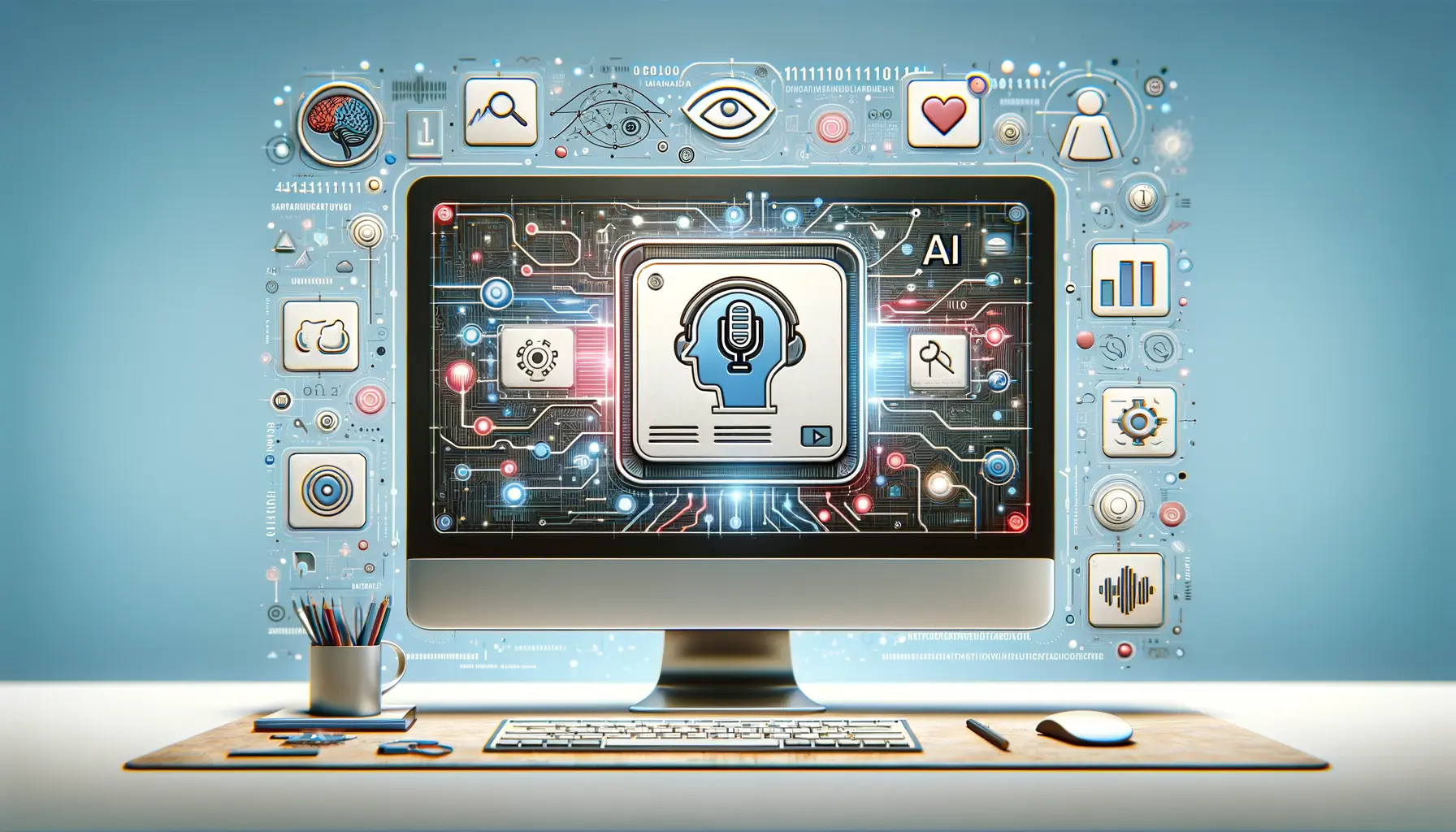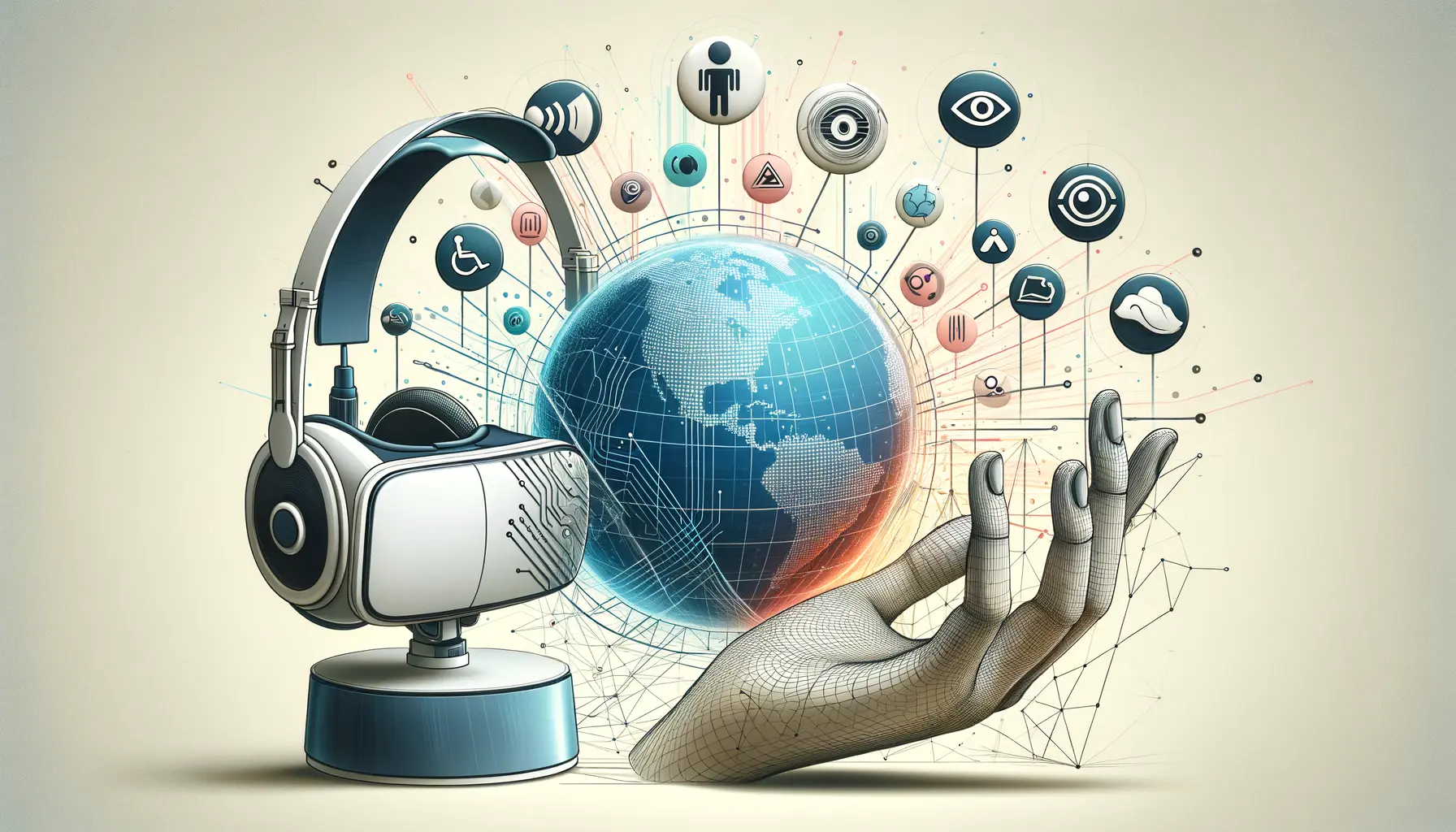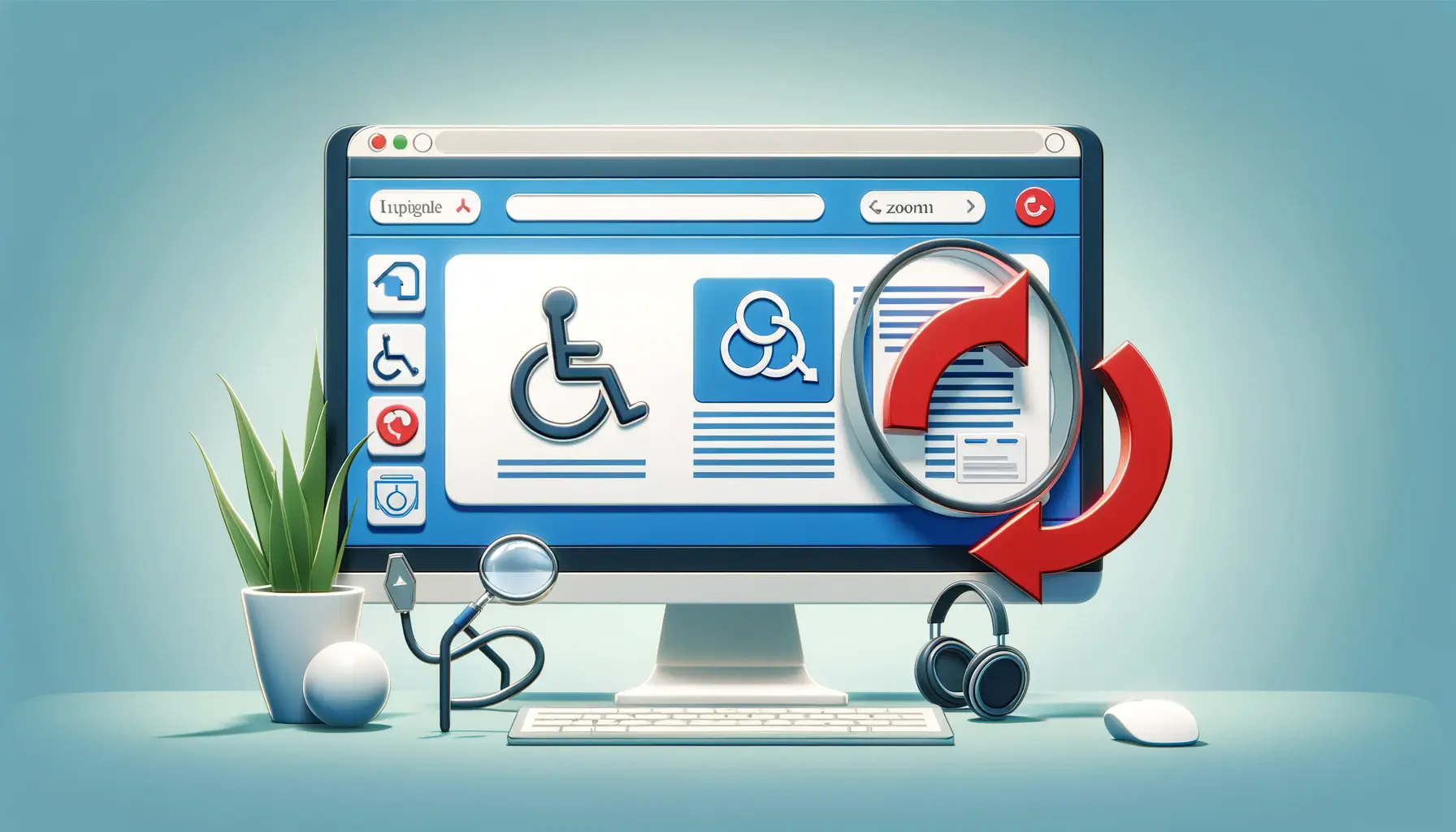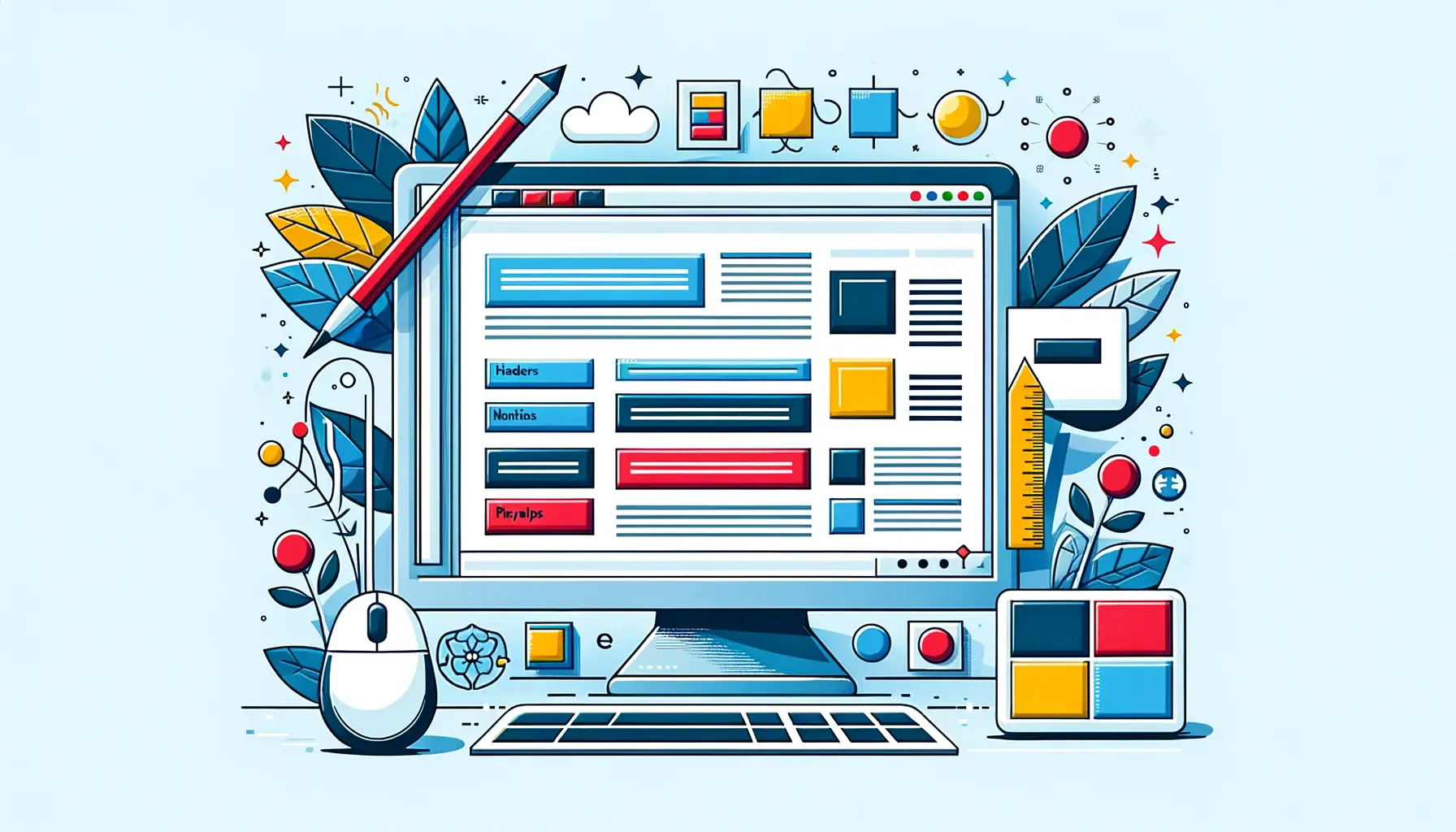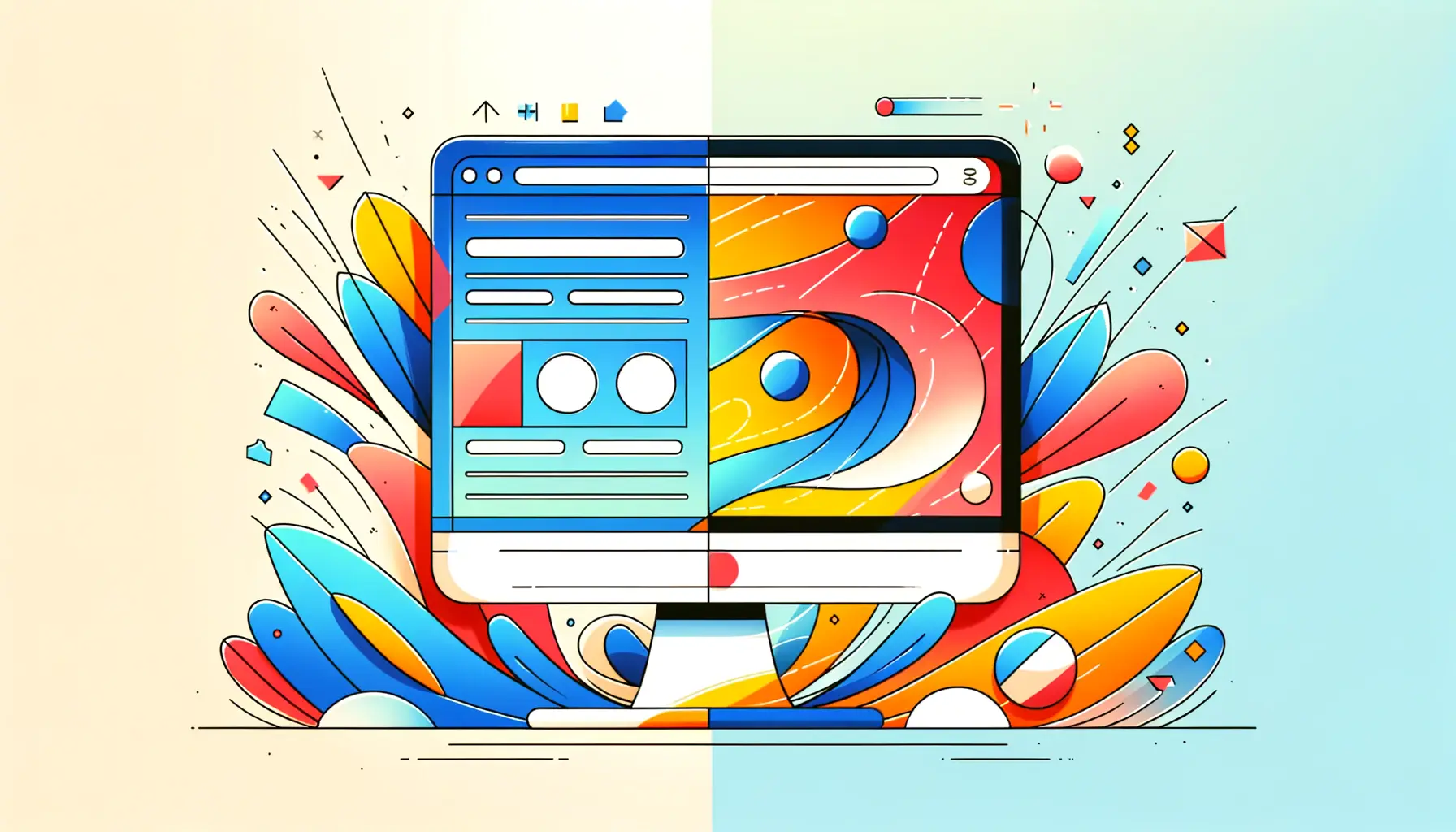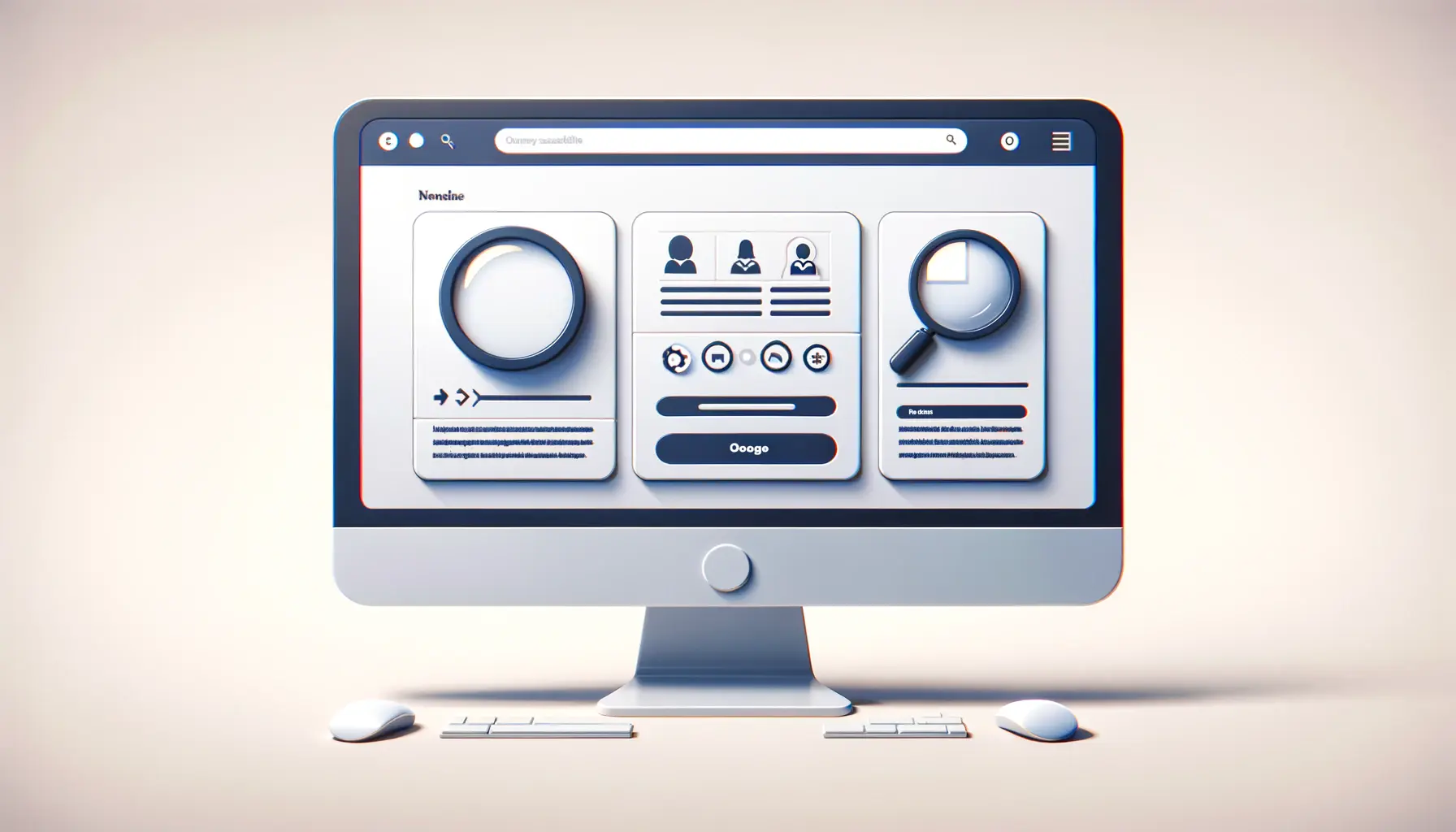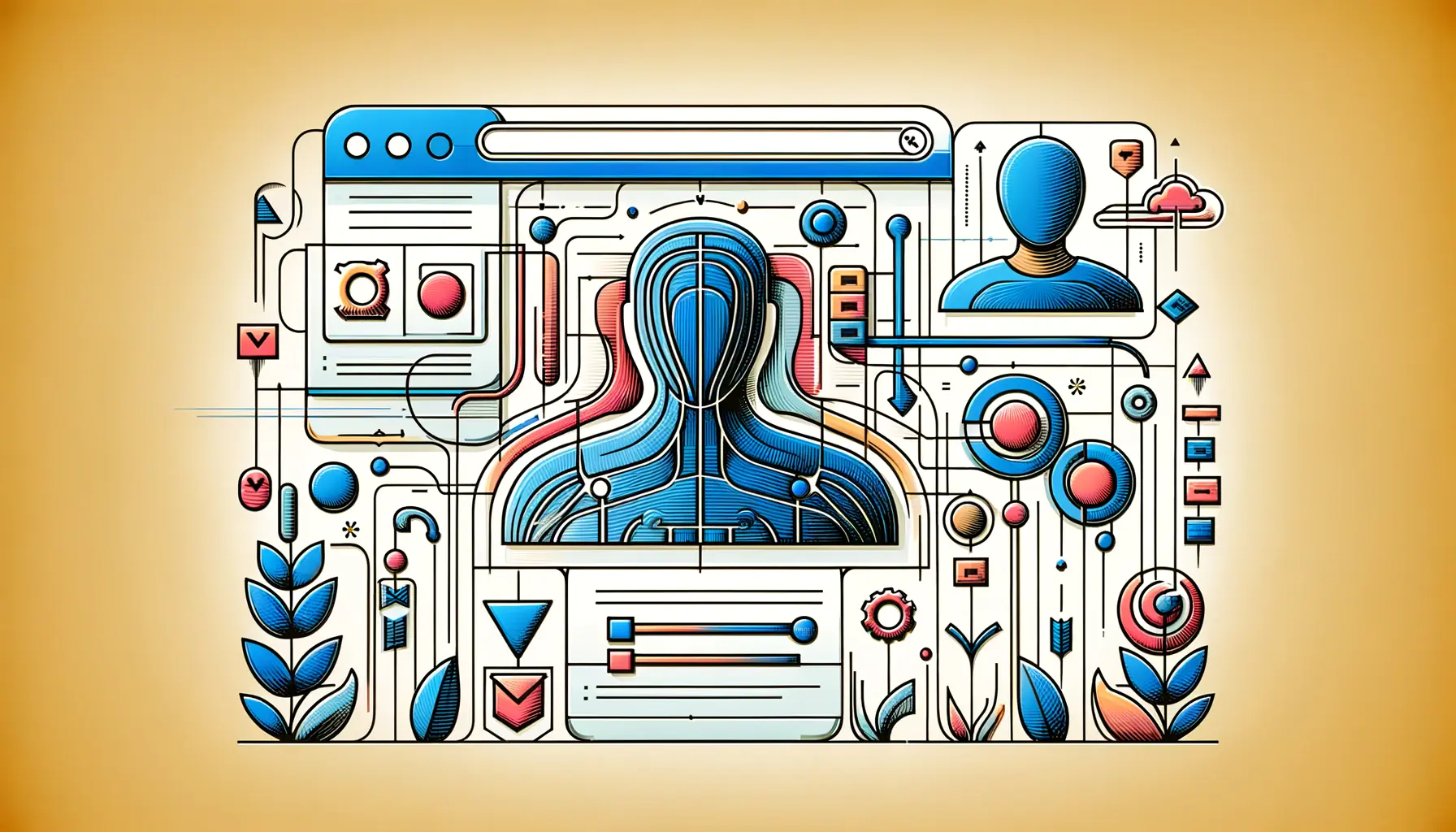The digital age has ushered in a new era of innovation and convenience, transforming the way we live, work, and interact.
At the heart of this transformation is artificial intelligence (AI), a technology that has been instrumental in driving advancements across various sectors.
One area where AI’s impact is increasingly significant is in enhancing web accessibility.
Web accessibility ensures that websites and online platforms are usable for everyone, including people with disabilities.
This is not just a matter of legal compliance or ethical responsibility; it’s about creating an inclusive digital world where every user has equal access to information and services.
AI’s role in web accessibility is multifaceted, offering solutions that range from improving user experience to automating compliance checks.
As we delve deeper into the future of AI in web accessibility, it becomes clear that this technology holds the key to unlocking a more inclusive and accessible internet.
By leveraging AI, developers and designers can create digital environments that cater to the diverse needs of all users, thereby fostering a more inclusive digital society.
- Understanding Web Accessibility and AI’s Role
- AI-Driven Innovations in Web Accessibility
- Challenges and Opportunities in AI-Enhanced Web Accessibility
- Integrating AI into Web Accessibility Strategies
- Case Studies: AI’s Impact on Web Accessibility
- Future Directions in AI and Web Accessibility
- Empowering Users Through AI-Enhanced Web Accessibility
- Embracing the Future of AI in Web Accessibility
- FAQs on The Future of AI in Web Accessibility
Understanding Web Accessibility and AI’s Role
Web accessibility is the practice of making websites and online resources usable by people of all abilities and disabilities.
This involves ensuring that web content is perceivable, operable, understandable, and robust.
AI contributes to this mission by offering tools and technologies that can automatically identify and rectify accessibility barriers, making websites more navigable for users with disabilities.
AI technologies, such as machine learning algorithms and natural language processing, can analyze vast amounts of data to detect patterns and make predictions.
In the context of web accessibility, these capabilities enable AI to understand user behavior, preferences, and potential obstacles they might face online.
Consequently, AI can adapt web content to meet individual needs, offering personalized experiences that enhance usability for people with disabilities.
Automating Accessibility Compliance
One of the most promising applications of AI in web accessibility is its ability to automate the process of ensuring compliance with web accessibility standards, such as the Web Content Accessibility Guidelines (WCAG).
AI-powered tools can scan websites to identify non-compliant elements, such as images without alt text or videos lacking captions.
These tools not only highlight issues but can also suggest fixes, significantly reducing the time and effort required to make websites accessible.
Moreover, AI’s continuous learning capabilities mean that these tools become more efficient over time, staying up-to-date with the latest accessibility guidelines and technologies.
This is crucial in a rapidly evolving digital landscape, where new web standards and technologies emerge regularly.
AI’s automation of accessibility compliance checks ensures that websites remain accessible to all users, paving the way for a more inclusive digital future.
Enhancing User Experience with AI
AI’s impact on web accessibility extends beyond compliance to significantly enhancing the user experience for people with disabilities.
For instance, AI-powered voice recognition and speech synthesis technologies enable users with visual impairments to interact with web content through voice commands, making the web more navigable and information more accessible.
Similarly, AI-driven predictive text and customizable interface settings can improve web usability for people with motor impairments or cognitive disabilities.
These technologies allow users to tailor their web experience to their specific needs, promoting greater independence and engagement with digital content.
AI-Driven Innovations in Web Accessibility
The integration of AI into web accessibility is not just about enhancing existing features; it’s also about pioneering innovative solutions that redefine the boundaries of what’s possible.
These AI-driven innovations are making the web more accessible and user-friendly for individuals with various disabilities, showcasing the transformative potential of AI in creating an inclusive digital environment.
Real-Time Captioning and Audio Descriptions
AI technologies have revolutionized the way multimedia content is made accessible on the web.
Through real-time captioning and audio descriptions, users with hearing and visual impairments can enjoy videos and audio content without barriers.
AI’s ability to process speech and visual elements in real-time ensures that captions and descriptions are accurate and synchronized with the content, providing a seamless viewing experience.
- Real-Time Captioning: AI algorithms transcribe spoken words into text captions instantaneously, making live broadcasts and videos accessible to deaf or hard-of-hearing users.
- Audio Descriptions: AI-generated audio descriptions offer verbal descriptions of visual elements in videos, aiding users with visual impairments in understanding the content.
Personalized Web Experiences
AI’s capacity for personalization is a game-changer in web accessibility.
By learning from user interactions and preferences, AI can customize web interfaces and content to suit individual accessibility needs.
This level of personalization not only enhances usability but also ensures that each user’s experience is optimized according to their specific requirements.
- Adaptive Interfaces: AI can adjust web interfaces, such as font size, color contrast, and layout, based on user preferences and needs.
- Content Customization: AI algorithms can filter and rearrange web content to prioritize relevance and accessibility for users with cognitive disabilities.
The potential of AI to provide personalized web experiences marks a significant advancement in web accessibility, offering unprecedented levels of convenience and inclusivity.
Accessible Navigation Through AI
Navigating the web can be a challenge for users with disabilities, but AI is making strides in creating more accessible navigation solutions.
From voice-activated commands to gesture recognition, AI-powered technologies are enabling users to interact with web content in innovative ways that accommodate their accessibility needs.
- Voice-Activated Navigation: Users can navigate websites and perform actions using voice commands, thanks to AI’s natural language processing capabilities.
- Gesture Recognition: AI can interpret physical gestures as commands, allowing users with motor impairments to control web interfaces without traditional input devices.
AI and the Future of Assistive Technologies
As AI continues to evolve, its role in developing assistive technologies for web accessibility is becoming increasingly significant.
Future AI advancements are expected to introduce new tools and features that further enhance the web experience for users with disabilities, pushing the boundaries of what’s possible in creating an accessible digital world.
- Advanced Predictive Text: AI-driven predictive text and autocomplete features can facilitate easier and faster typing for users with motor impairments.
- Intelligent Assistive Devices: AI can power smart assistive devices that interact with web content, offering more intuitive and efficient ways for users with disabilities to access information.
Challenges and Opportunities in AI-Enhanced Web Accessibility
While AI presents remarkable opportunities for enhancing web accessibility, it also poses unique challenges.
Addressing these challenges is crucial for realizing the full potential of AI in creating an inclusive digital environment.
However, with every challenge comes an opportunity to innovate and improve, pushing the boundaries of accessible web design further than ever before.
Ensuring AI Understands Context
One of the primary challenges in leveraging AI for web accessibility is ensuring that AI technologies can accurately understand and interpret context.
Contextual understanding is essential for generating relevant and accurate captions, descriptions, and personalized content.
However, AI’s ability to grasp the nuances of human language and visual cues is still evolving.
- Opportunity for Improvement: Advancements in natural language processing and machine learning models offer the opportunity to enhance AI’s contextual understanding, leading to more accurate and meaningful accessibility features.
- Research and Development: Investing in research and development can help overcome limitations in AI’s contextual understanding, paving the way for more sophisticated AI-driven accessibility solutions.
Privacy and Ethical Considerations
As AI technologies collect and analyze user data to provide personalized web experiences, concerns about privacy and ethics arise.
Ensuring that AI-enhanced web accessibility solutions respect user privacy and adhere to ethical standards is paramount.
- Developing Ethical AI Frameworks: Creating ethical AI frameworks that prioritize user privacy and consent can address these concerns, ensuring that AI technologies are used responsibly.
- User-Centric Design: Incorporating user feedback and preferences into the development of AI-driven accessibility features can help balance personalization with privacy.
Balancing innovation in AI with ethical considerations and privacy concerns is essential for fostering trust and acceptance among users, thereby enhancing the overall impact of AI on web accessibility.
Accessibility for Diverse Disabilities
Another challenge is ensuring that AI-driven web accessibility solutions cater to a wide range of disabilities.
The diversity of user needs requires AI technologies to be versatile and adaptable to various accessibility requirements.
- Inclusive Design Principles: Applying inclusive design principles in the development of AI technologies can ensure that web accessibility solutions are effective for users with diverse disabilities.
- Collaboration with Accessibility Experts: Collaborating with accessibility experts and individuals with disabilities during the design and testing phases can help identify and address specific needs, leading to more inclusive AI-driven solutions.
Keeping Pace with Rapid Technological Changes
The rapid pace of technological advancement presents both a challenge and an opportunity for AI-enhanced web accessibility.
Ensuring that AI-driven solutions remain up-to-date with the latest web technologies and accessibility standards is crucial for maintaining an accessible digital environment.
- Continuous Learning and Adaptation: Leveraging AI’s ability for continuous learning and adaptation can help keep accessibility solutions aligned with evolving web technologies and standards.
- Collaborative Ecosystems: Fostering collaborative ecosystems among developers, AI researchers, and accessibility advocates can facilitate the exchange of knowledge and best practices, driving innovation in AI-enhanced web accessibility.
Integrating AI into Web Accessibility Strategies
Integrating AI into web accessibility strategies involves a comprehensive approach that encompasses technology, design, and policy.
By embedding AI technologies within the fabric of web development and accessibility efforts, organizations can create more inclusive digital experiences.
This integration not only benefits users with disabilities but also enhances the overall user experience, making websites more intuitive, engaging, and user-friendly for everyone.
Developing AI-Enabled Accessibility Features
At the core of integrating AI into web accessibility is the development of AI-enabled features that address specific accessibility challenges.
This involves leveraging AI technologies such as machine learning, natural language processing, and computer vision to create tools that can automatically identify and resolve accessibility issues, provide real-time assistance to users, and personalize the web experience based on individual needs.
- Automated Testing and Remediation: Implementing AI-powered tools that can automatically test web content for accessibility issues and suggest remediations can significantly streamline the process of making websites accessible.
- Dynamic Content Adaptation: Utilizing AI to dynamically adapt web content and interfaces based on user interactions and preferences ensures that websites can cater to a wide range of accessibility needs.
Training and Awareness for Web Developers
Integrating AI into web accessibility also requires a focus on training and awareness for web developers and designers.
Educating development teams about the potential of AI to enhance web accessibility and providing them with the tools and knowledge to implement AI-driven solutions are essential steps in fostering an accessibility-first approach in web design.
- Accessibility Workshops: Organizing workshops and training sessions on AI-driven web accessibility can equip developers with the skills and insights needed to incorporate AI technologies into their projects.
- Best Practices and Guidelines: Developing comprehensive guidelines on integrating AI into web accessibility efforts can help standardize practices and ensure consistency across digital platforms.
Incorporating AI into web accessibility strategies not only enhances accessibility but also drives innovation in web design, leading to richer and more interactive user experiences.
Policy and Regulation Considerations
As AI technologies become increasingly integral to web accessibility, it’s important to consider the policy and regulatory implications.
Ensuring that AI-driven accessibility solutions comply with existing web accessibility standards and regulations, while also anticipating future policy developments, is crucial for sustainable and effective integration.
- Compliance with Web Accessibility Standards: AI-driven solutions must be designed to comply with established web accessibility standards, such as WCAG, to ensure they meet legal and ethical requirements.
- Engagement with Regulatory Bodies: Engaging with regulatory bodies and advocacy groups can help organizations stay informed about upcoming changes in web accessibility policies and adapt their AI strategies accordingly.
Measuring the Impact of AI on Web Accessibility
To fully integrate AI into web accessibility strategies, it’s essential to establish metrics and methods for measuring the impact of AI-driven solutions.
This involves tracking improvements in accessibility compliance, user satisfaction, and the overall effectiveness of AI technologies in addressing accessibility challenges.
- User Feedback and Surveys: Collecting feedback from users, especially those with disabilities, can provide valuable insights into the effectiveness of AI-driven accessibility features.
- Accessibility Audits: Conducting regular accessibility audits, including assessments of AI-enabled features, can help measure progress and identify areas for improvement.
Case Studies: AI’s Impact on Web Accessibility
Exploring real-world applications and outcomes of AI in enhancing web accessibility provides valuable insights into the technology’s potential and effectiveness.
These case studies highlight how AI-driven solutions have been successfully implemented to address accessibility challenges, offering inspiration and guidance for organizations looking to integrate AI into their web accessibility strategies.
AI-Powered Screen Readers
A leading technology company developed an AI-powered screen reader designed to offer a more intuitive and efficient web navigation experience for visually impaired users.
By leveraging advanced natural language processing and machine learning algorithms, the screen reader can understand complex web layouts and provide users with concise, contextually relevant descriptions of web content.
This AI-driven approach has significantly improved web accessibility for visually impaired users, allowing for smoother navigation and interaction with web content.
- User Impact: Visually impaired users reported a marked improvement in their ability to access and interact with web content, highlighting the screen reader’s ability to accurately describe and navigate complex web pages.
- Adoption and Recognition: The AI-powered screen reader has been widely adopted across various industries, receiving acclaim for its innovative approach to enhancing web accessibility.
Automated Accessibility Compliance Testing
An international non-profit organization specializing in digital accessibility introduced an AI-based tool for automated web accessibility compliance testing.
This tool scans websites to identify accessibility issues in real-time, providing developers with actionable insights and recommendations for remediation.
The AI-driven testing tool has streamlined the process of ensuring web content complies with accessibility standards, making it easier for organizations to maintain accessible digital platforms.
- Efficiency Gains: The tool has significantly reduced the time and resources required to identify and address web accessibility issues, enabling organizations to achieve and maintain compliance more efficiently.
- Broader Impact: By making automated testing more accessible to organizations of all sizes, the tool has contributed to a broader adoption of web accessibility best practices across the digital landscape.
These case studies demonstrate the transformative potential of AI in making the web more accessible, showcasing how AI-driven solutions can effectively address a range of accessibility challenges.
Personalized Accessibility Features
A startup specializing in AI and web accessibility developed a suite of personalized accessibility features that adapt web content and interfaces to individual user needs.
Utilizing machine learning, the technology dynamically adjusts text size, color contrast, and navigation based on user preferences and behavior patterns.
This personalization has enhanced the web experience for users with various disabilities, offering a more inclusive and user-friendly digital environment.
- Customization at Scale: The technology has enabled websites to offer personalized accessibility options at scale, catering to a diverse user base with varying accessibility needs.
- Innovative Approach: By focusing on personalization, the startup has introduced an innovative approach to web accessibility, emphasizing the importance of adapting digital content to suit individual needs.
Enhancing Educational Content Accessibility
An educational technology company leveraged AI to enhance the accessibility of its online learning platforms.
Through AI-driven captioning and audio descriptions, the company has made educational videos and resources more accessible to students with hearing and visual impairments.
This initiative has not only improved accessibility but also enriched the learning experience for all students, demonstrating the educational sector’s potential to benefit from AI-enhanced web accessibility.
- Learning Outcomes: Students with disabilities have reported improved access to educational content, leading to better learning outcomes and engagement.
- Scalability: The AI-driven approach has allowed the company to efficiently scale its accessibility efforts, ensuring a wide range of educational content is accessible to all students.
Future Directions in AI and Web Accessibility
The intersection of AI and web accessibility is ripe with potential, promising to usher in a new era of inclusivity in the digital realm.
As technology continues to evolve, the future directions of AI in enhancing web accessibility are both exciting and transformative.
These advancements will not only benefit users with disabilities but also contribute to a more intuitive, user-friendly web environment for all.
Advancements in AI Technologies
Future advancements in AI technologies, such as more sophisticated natural language processing, machine learning algorithms, and computer vision, are expected to significantly enhance web accessibility.
These technologies will provide more accurate and context-aware solutions, further reducing barriers for users with disabilities.
For instance, improved AI-driven screen readers could offer even more nuanced interpretations of web content, while advanced predictive text systems could facilitate more efficient communication for users with motor impairments.
- Contextual Adaptation: Future AI systems will better understand user context and intent, enabling more personalized and relevant web experiences.
- Seamless Integration: As AI technologies become more advanced, their integration into web platforms will become more seamless, offering users intuitive accessibility features without requiring manual activation or configuration.
Collaborative AI and Human Efforts
The future of AI in web accessibility also lies in the collaborative efforts between AI technologies and human expertise.
While AI can automate and enhance many aspects of web accessibility, human insight and empathy are irreplaceable in designing truly inclusive digital experiences.
Combining AI’s efficiency and scalability with human creativity and understanding will lead to more comprehensive and empathetic accessibility solutions.
- User-Centered Design: Incorporating user feedback and participatory design processes will ensure that AI-driven accessibility solutions are grounded in real user needs and experiences.
- Accessibility as a Priority: A collaborative approach will reinforce the importance of prioritizing accessibility in all stages of web development, from initial design to ongoing maintenance.
Embracing the collaborative potential between AI and human efforts in web accessibility underscores a commitment to creating a digital world that is truly accessible to everyone.
Regulatory and Ethical Considerations
As AI plays an increasingly central role in web accessibility, regulatory and ethical considerations will become more prominent.
Ensuring that AI-driven accessibility solutions adhere to ethical standards and respect user privacy and autonomy will be crucial.
Additionally, regulatory frameworks may need to evolve to address the unique challenges and opportunities presented by AI in web accessibility, ensuring that these technologies benefit all users without compromising their rights or dignity.
- Privacy and Consent: Future AI solutions will need to prioritize user privacy, ensuring that personalization and data analysis are conducted with user consent and transparency.
- Inclusive Policies: Regulatory bodies may introduce more inclusive policies that encourage the adoption of AI-driven accessibility solutions while safeguarding against potential misuse or bias.
Expanding the Scope of Accessibility
The future of AI in web accessibility will likely see an expansion in the scope of what is considered accessible.
Beyond addressing the needs of users with traditional disabilities, AI could play a key role in catering to a broader range of cognitive, neurological, and temporary impairments.
This expanded focus will contribute to a more universally accessible web, where diversity in user ability is fully accommodated and celebrated.
- Cognitive and Neurological Inclusivity: AI-driven solutions could offer support for users with cognitive and neurological differences, providing customized content presentation and interaction modes.
- Temporary Impairments: Recognizing the importance of accessibility for users with temporary impairments, AI could offer adaptable interfaces and features that cater to these users’ temporary needs.
Empowering Users Through AI-Enhanced Web Accessibility
The integration of artificial intelligence (AI) into web accessibility is not just a technological advancement; it’s a movement towards empowering users with disabilities by providing them with the tools and features they need to navigate the digital world independently and efficiently.
As AI continues to evolve and become more sophisticated, its role in enhancing web accessibility is set to become even more significant, offering new opportunities for inclusion and engagement.
Personal Empowerment and Independence
AI-enhanced web accessibility tools empower users by offering them greater control over their web experience.
Features like voice navigation, personalized interface adjustments, and predictive text input allow users to interact with web content in ways that suit their individual needs and preferences.
This level of personalization not only improves accessibility but also fosters a sense of independence among users, enabling them to explore, learn, and communicate online without barriers.
- Customizable Web Experiences: AI’s ability to learn from user interactions and adapt accordingly means that web experiences can be tailored to meet the unique needs of each user, enhancing their sense of autonomy online.
- Barrier-Free Navigation: With AI-powered tools, users can navigate the web more freely, accessing information and services without the frustration of encountering inaccessible content.
Enhancing Social Inclusion and Participation
By breaking down barriers to web accessibility, AI is playing a crucial role in enhancing social inclusion and participation for users with disabilities.
Access to information, online services, and social networks is essential for full participation in modern society.
AI-driven accessibility features ensure that users with disabilities are not left behind, enabling them to engage in social, educational, and professional activities online.
- Access to Online Communities: Improved web accessibility allows users with disabilities to engage with online communities, participate in discussions, and form connections with others.
- Equal Opportunities: AI-enhanced web accessibility levels the playing field, providing users with disabilities equal opportunities to access education, employment, and entertainment online.
Driving Innovation in Web Design
The push for AI-enhanced web accessibility is also driving innovation in web design and development.
As developers and designers seek to integrate AI-driven accessibility features into their projects, they are encouraged to think creatively and adopt inclusive design principles from the outset.
This shift towards accessibility-first design not only benefits users with disabilities but also leads to more versatile, user-friendly web environments for all users.
- Inclusive Design Practices: The integration of AI into web accessibility promotes the adoption of inclusive design practices, encouraging developers to consider a wide range of user needs in their designs.
- Universal Usability: By focusing on accessibility, web designers can create interfaces that are intuitive and easy to use for everyone, enhancing the overall user experience.
The empowerment of users through AI-enhanced web accessibility is a testament to the transformative potential of technology to create a more inclusive and accessible digital world.
Looking Towards an Inclusive Digital Future
As we look towards the future, the role of AI in web accessibility is set to expand, bringing us closer to a digital landscape where everyone, regardless of their abilities, can access and benefit from the wealth of information and opportunities available online.
The ongoing collaboration between AI developers, web designers, accessibility advocates, and users will be key to achieving this vision, ensuring that the digital world becomes more inclusive, empowering, and accessible for all.
- Collaborative Development: The future of AI-enhanced web accessibility relies on continued collaboration across disciplines to innovate and refine accessibility solutions.
- Commitment to Inclusion: A shared commitment to inclusion and accessibility will drive the development of technologies and strategies that ensure the web is accessible to everyone, paving the way for a truly inclusive digital future.
Embracing the Future of AI in Web Accessibility
The journey towards an inclusive digital future is well underway, with artificial intelligence (AI) leading the charge in transforming web accessibility.
As we have explored, AI’s role in enhancing web accessibility is multifaceted, offering innovative solutions that address longstanding barriers faced by users with disabilities.
From automated compliance checks to personalized user experiences, AI is redefining what it means to create an accessible web, ensuring that everyone can participate fully in the digital age.
The Path Forward with AI-Enhanced Accessibility
Looking ahead, the potential of AI to further revolutionize web accessibility is vast.
As technology continues to evolve, so too will the tools and features designed to make the web more accessible.
The commitment of developers, designers, and organizations to integrating AI into their accessibility strategies will be crucial in realizing this potential.
By prioritizing accessibility and embracing the latest AI technologies, we can continue to break down digital barriers and create a web environment that is truly inclusive for all users.
Key Takeaways for an Inclusive Digital World
- AI’s ability to automate and personalize web accessibility features offers unprecedented opportunities for enhancing the user experience for people with disabilities.
- Collaboration between AI developers, web designers, and accessibility advocates is essential for driving innovation and ensuring that web accessibility solutions are effective and user-centered.
- As AI technologies advance, they will provide even more sophisticated solutions for web accessibility, further empowering users with disabilities to navigate the digital world independently.
- Regulatory and ethical considerations will play an increasingly important role in guiding the development and implementation of AI-driven web accessibility solutions, ensuring they are used responsibly and for the benefit of all users.
In conclusion, the future of AI in web accessibility is bright, offering a roadmap towards a digital landscape where inclusivity and accessibility are not just goals, but realities.
By harnessing the power of AI, we can ensure that the web remains a space where everyone, regardless of their abilities, has equal access to information, services, and opportunities.
The journey towards an inclusive digital future is ongoing, and AI is undoubtedly one of our most valuable allies in this endeavor.
Quality web design is key for a great website! Check out our service page to partner with an expert web design agency.
FAQs on The Future of AI in Web Accessibility
Explore common questions about the transformative role of artificial intelligence in enhancing web accessibility for all users.
AI enhances web accessibility by automating compliance checks, personalizing user experiences, and providing real-time assistance such as captioning and audio descriptions.
While AI significantly improves accessibility, human insight and empathy are essential for a fully accessible web experience, addressing diverse user needs.
AI-driven innovations include real-time captioning, audio descriptions, personalized web experiences, and automated accessibility testing tools.
Yes, AI is pivotal to the future of web accessibility, offering scalable, efficient solutions to make digital content accessible to a broader audience.
AI addresses these needs by providing adaptable interfaces, predictive text input, voice navigation, and content customization based on individual preferences.
Challenges include ensuring AI’s contextual understanding, balancing personalization with privacy, and catering to a wide range of disabilities.
Developers can integrate AI by adopting inclusive design principles, utilizing AI-powered tools for testing and remediation, and focusing on user-centered solutions.
Ethics play a crucial role in ensuring AI-driven solutions respect user privacy, consent, and provide equitable access to digital content for all users.
